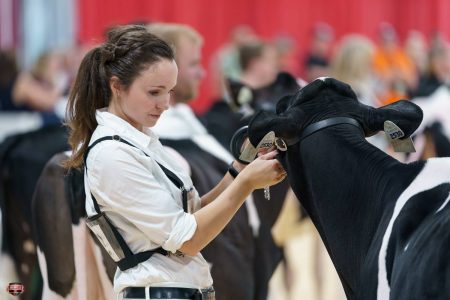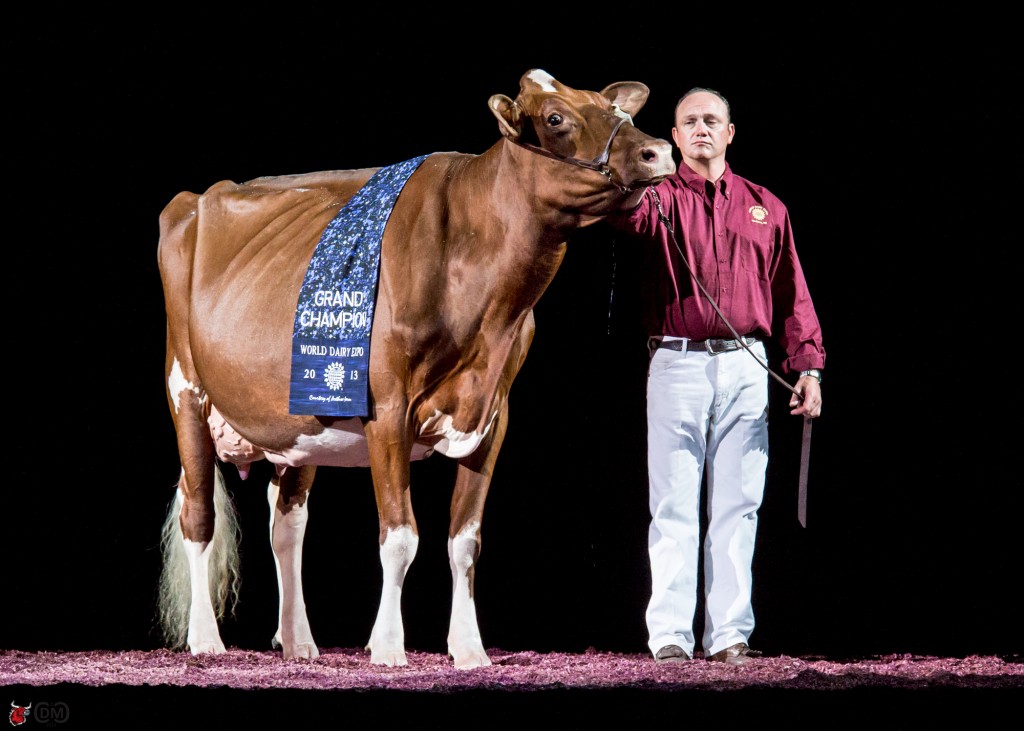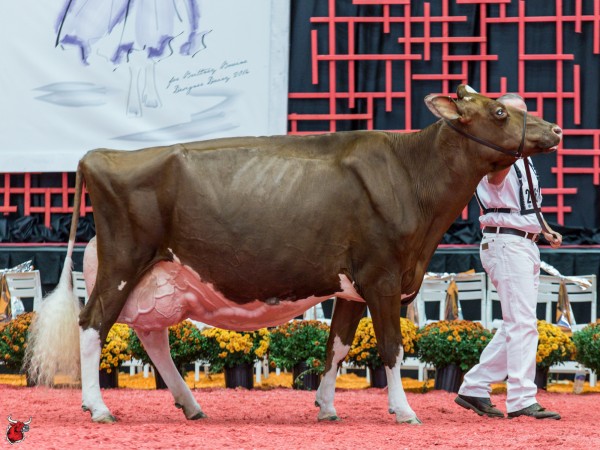Glass ceilings for women in business can be a sensitive topic. That it is a topic at all is the biggest confirmation that gender bias exists. When I approached the idea of glass ceilings in the dairy barn, I had to be prepared to discern what is historical, what is 2018 trendy and what, if anything is true? The biggest problem, as I see it, is that in today’s instant social media world, Information is making headlines that may have little or nothing to do with real life situations. How many of the self-proclaimed authorities on women in agriculture have actual personal experience to back up their rants. How does gender bias limit dairy success? Who is responsible? Where does gender bias begin?
“What is Blatant Gender Bias? What is Unconscious Gender Bias?”
Blatant Gender Bias occurs when there is no attempt to be politically correct. Unconscious Gender Bias puts up many of the same hurdles, however it refers to the stereotypes, both negative and positive, that exist in our subconscious and affect our behavior, without us being fully aware of it.
Here are 4 examples:
- Blatant: “Men should make all the decisions on the dairy farm.” Unconscious: “Farm women are better suited for desk work. Women are also good at looking after calves.”
- Blatant: “Farming is a man’s world. Women haven’t got what it takes to handle cows.” Unconscious: “Dairy jobs have nothing to do with bias. They arise from safety issues.”
- Blatant: “Women today are constantly shaking up the status quo. What’s next? Will they demand pink tractors and trucks?” Unconscious Bias: “The 24/7 nature of dairy decision making, is too dirty and too stressful for women.”
- Blatant: “Women are not welcome in the rough world of dairy farming. I shouldn’t be forced to tone it down just because women are present.” Unconscious Bias: “The hearty backslapping and banter that are normal among men on the farm are not suitable for women.”
“Dairy Wives Are Dairy Partners”
That phrase sounds empowering at face value. Furthermore, it’s fair to say that most 24/7 dairy managers, when asked if women can do the same jobs that men do would quickly answer, “Absolutely!” However, when I posed that question to my partner at The Bullvine his answer was. “Well, behind the scenes, the answer might be closer to, ‘No’.” I huffed, “Seriously? On any given day what jobs on a dairy farm can’t a woman do?” Then began the explanations. “I know where you’re coming from but you can’t change people overnight!” Apparently fifty years won’t change some people either. Please note that every time I typed farmer in this article, it had to be changed because it only referenced men!! It’s quite likely that stereotypes go both ways.
“Is the Dairy Door Closed to Women?”
When a new consultant, veterinarian or cold calling ag supplier comes to the door it’s not likely that you hear, “Hi. I’m here to speak to your wife.” When you ask “Why?” do they reply, “I’m looking to talk with the decision maker.” With the wife changed to husband and “Hello” to “Goodbye” this is a regular door-closing experience at some stuck-in-the- past dairy business exchanges. Phone calling is even worse? When I try to answer problems, I am often not even trusted to deliver a message. Questioners that don’t recognize teamwork, partnerships or, at the very least, gatekeepers don’t get the opportunity to join the team, make a sale or share a business relationship.
“It’s Time for a Gender Reality Check”
Having a good working staff is key to dairy profitability. In actual fact, gender doesn’t influence the ability to do good work. Three people doing the same job may have distinctly different outcomes. Not all of them will share the same level of success. This could be due to training, work ethic, decision-making or time management. It’s the input that determines success. Bad outcomes and poor decisions can happen, regardless of gender.
“Does Gender Progress Mean Makeover Or Takeover?”
It’s undeniable that the size, management and future viability of North American dairy farms is being challenged and many may not make a successful transition into the future. To do so will require that we keep open minds when it comes to technology, genetics, nutrition and, yes, leadership. There isn’t any room for fear of change based on stereotypical male-female roles. A look at progressive and thriving dairy operations is a clear way to observe that university graduates are still passionate about farming and still coming home after their exposure to modern farm education. From where I sit right now, the dairy operation next door is growing and thriving under the management of one of the sisters. What was once an unusual choice, is easily recognized as the one that works. Next generation farming can’t afford to bypass 50% of the farm-raised gene pool. Our biases need a makeover to recognize that it’s more important that farmers are focused on the challenging and engaging nature of the work. Dedication to production will take any dairy much further than passive-aggressive gender discrimination can.
“Male-Female Progress Also Needs Technology-Automation Progress”
If we are talking about biases we can’t ignore the public bias against larger farms, dairy technology and 21st century animal breeding practices. Once again, the shrinking demographic of farmers is being affected by the biases of a consuming public that is two or more generations from an actual connection to the farm. It seems ironic that the farmers who are idolized in historical reference and romantic family memories are the same ones who are vilified for working to provide food. The contradiction of wanting to avoid “large” and at the same time “provide enough” is not seen as the challenge it really is. Being met with consumers who doubt and challenge can be crushing and it too rises from biases. The farmer doesn’t “take a husband” in the nursery rhymes and Old Macdonald didn’t have robotic milkers.
“What Does Gender Equality Look Like?”
Nothing is either black or white. There is no prescription for dairying that makes decision-making clear cut. It doesn’t only change from year to year it changes on a daily basis. Having said that, there are many out-of-date discriminatory practices that are holding farm success back. How many of these questions get a “Yes!” on your progressive dairy operation?
- Are women in the family expected to do work for free doing what would be a paid position for a hired man?
- Is there quid pro quo? If there is a crisis in the daycare side of the dairy, does the husband pitch in indoors?
- If there are free tickets to a seminar, symposium or training session, is it always the man who goes?
For many families in the dairy business, it is not simply finances and cattle rearing at stake. It is the livelihood and legacy of the family. The industry has changed. Social interaction has changed. However mutual respect and planning for the future demands equality in more than name only. - Is your answer “Yes! That’s how we operate!”
“Name Calling. How Important is it on Dairy Farms?”
In business, we learn much about the respect for the position from the name that it is given. “The wife” dishonors all the contributions made in the same way that “the girl” does, when applied to office workers. When did you last hear an office authority figure say, “I’ll get my boy to look after that for you~? And, when some farm service, supply or consultant vehicle drives in the farm lane have you ever remarked, “Oh. He has a girl with him.” It’s a judgment made solely on gender. Whether it’s an office in a high rise, or a team in the milk house, it’s always better to have the best people doing their best work. This goes beyond gender. After all, an all-male team can be overwhelmed by bad weather, health issues or equipment breakdowns and we don’t resort to,” I knew a man couldn’t handle that.”
“Women’s Days Are Numbered”
A simple way to know if there is a glass ceiling in the dairy barn is just to do a headcount. Dairy farmers are quite comfortable working with an all-woman bovine production crew. But when it comes to female team members the numbers are still counted on one or two hands. We have one female dairy nutritionist. Our A.I. company has two women. We have a female breed association President. Now what are the male numbers associated with those positions?
The Bullvine Bottom Line
Glass ceilings whether they are in the barn, the business or the board room automatically limit the full potential for success. No one is perfect because of their gender. No one fails for that reason either. There is no doubt that we rise by lifting others and when we work together, we get the best of both worlds. We should always inspire the best to rise to the top.
Get original “Bullvine” content sent straight to your email inbox for free.






 It’s not about you it’s about the animal
It’s not about you it’s about the animal Know the ring you are showing in
Know the ring you are showing in Learn from the best
Learn from the best




